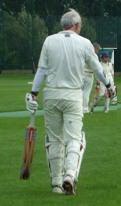So come all ye at hame wi Freedom,
Never heed whit the hoodies croak for doom
In your hoose a' the bairns o Adam
Can find breid, barley-bree and painted room.
A verse from the great song Freedom Come All Ye, sung with compelling effect at the opening of the Commonwealth Games by Pumeza Matshikiza.
Never heed whit the hoodies croak for doom
In your hoose a' the bairns o Adam
Can find breid, barley-bree and painted room.
A verse from the great song Freedom Come All Ye, sung with compelling effect at the opening of the Commonwealth Games by Pumeza Matshikiza.
She, and the song, put the shameful efforts of Rod Stewart, John Barrowman and Karen Dunbar firmly in their place. Test Match Quality.
In a perfect world - where rain never stops play and all batsmen walk - Freedom Come All Ye would be the national anthem - not of Scotland - for it is explicitly anti the concept of nation - but of all nations.
Freedom Come All Ye was written by Hamish Henderson in 1960 to the tune the Bloody Fields of Flanders. Henderson was a major figure in the revival of interest in Scottish Folk music and culture in the second half of the last century - many suggest he is the most important Scottish poet since Burns.
In a perfect world - where rain never stops play and all batsmen walk - Freedom Come All Ye would be the national anthem - not of Scotland - for it is explicitly anti the concept of nation - but of all nations.
 |
| Hamish Henderson |
That may be so, but the sad fact is that his work does not include much of interest to the cricketer. Freedom, justice, equality, human dignity are common themes, but seam bowling is absent.
This oversight is a bit surprising, for Henderson in his younger years would certainly have had much opportunity to gain familiarity with the great game.
 |
| Cricket Pavilion - Dulwich College |
(FB is unconvinced by that derivation - in lower league cricket with which FB is familiar the opposite is of course the case. It is one of the most busy parts of the field. It is cow corner after the agricultural nature of the shots that put the ball there.)
Henderson could have done some sterling work investigating this important etymological issue, but declined the opportunity. Dulwich has produced a number of prominent cricketers. Most recently, England Test players Eoin Morgan and Chris Jordan have been students at Dulwich. But the most significant cricketer to have come from the school is undoubtedly Trevor Bailey. (61 Caps for England and Cricketer of the Year in 1950). The school's sports ground now bears his name.
Henderson and Bailey overlapped at Dulwich. Did the Boil ever face him in the nets? Impossible to say for there is no reference to Bailey - nor even net practice - in Henderson's work . (FB has therefore done one better than him).
Henderson and Bailey overlapped at Dulwich. Did the Boil ever face him in the nets? Impossible to say for there is no reference to Bailey - nor even net practice - in Henderson's work . (FB has therefore done one better than him).
Nor did he exploit his higher education properly either. He read languages at Downing College Cambridge, which was founded in 1800 and is the only college at Cambridge founded between 1596 and 1869. Cricket was readily available. Its most famous cricketing son is Mike Atherton.
In cricketing terms therefore Hamish Henderson is a disappointment. It is as well therefore that he has left us Freedom Come All Ye - it redeems everything.
Broken faimlies in lands we’ve herrietWill curse Scotland the Brave nae mair, nae mair;
Black and white, ane til ither mairriet
Mak the vile barracks o their maisters bare



No comments:
Post a Comment